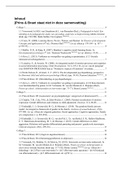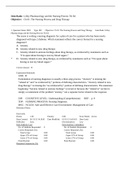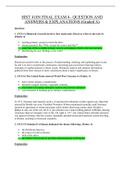Samenvatting
Samenvatting literatuur Kind en omgeving
- Vak
- Kind en omgeving
- Instelling
- Universiteit Utrecht (UU)
In dit document staat een samenvatting van de literatuur van het vak Kind en Omgeving, onderdeel van de minor Jeugdcriminaliteit en Jeugdbescherming. LET OP: De literatuur van het boek van Prins & Braet is niet samengevat in dit document, dus alleen de artikelen staan erin!
[Meer zien]






